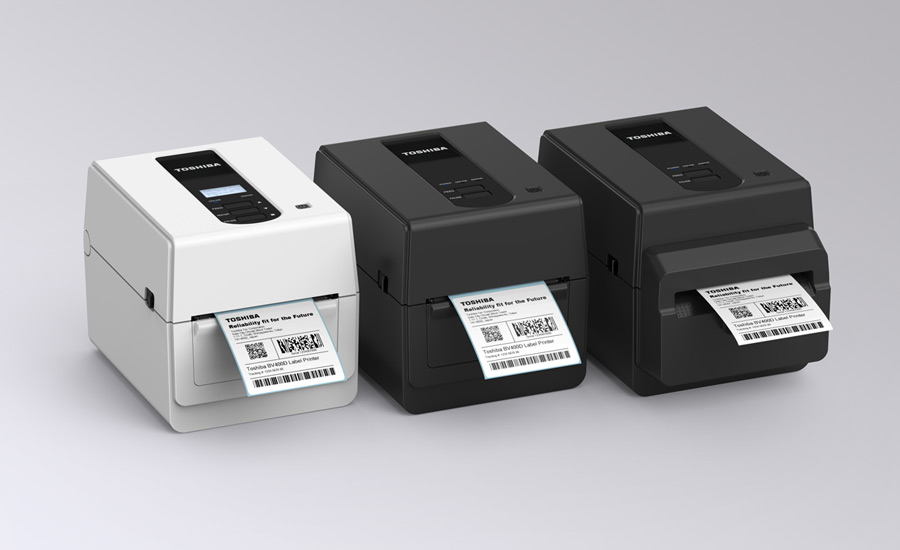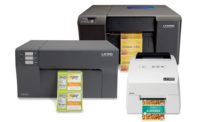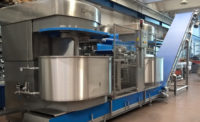The latest trends in labeling for bakery and snack producers involve advances in printers, software, inks, and marking/coding technology. New systems enhance product appeal and better communicate information on food content while providing flexibility to run a wide range of product sizes and types.
The nature of the bakery and snack market poses challenges to manufacturers of labeling equipment. One of the biggest challenges is versatility, according to Michael Gerrity, technical sales and business development, Fortis Solutions Group, Virginia Beach, VA. “Companies are running more products without standardized containers, so there is a need to transfer various sizes and shapes and flip quickly between items. They often want to use the label as a tamper-evident seal and this can pose challenges for speed and efficiency.”
New regulations are another factor. FDA began enforcing new nutritional facts guidelines in 2020, while the rules around allergen labeling are being tested in market segments such as snack foods. To keep pace, producers need to ensure their labeling is completely accurate, not only for compliance but for the public’s trust in their brand. “These trends are pushing companies to adopt label management systems that offer a reliable method to maintain compliant and accurate labeling,” says Sean Riley, senior director, media and industry communications, PMMI, Reston, VA.
Label printing has traditionally been done with thermal printing technology, while direct marking typically involves continuous laser etching and inkjet printing—often handled separately. “Today, bakery and snack producers are seeking one solution for both types of printing. The goal is centralization through a label management system with the capabilities to interface with direct marking and labeling printers, regardless of brand,” Riley adds.
Operating in a more sustainable and eco-conscientious manner as efficiently and affordably as possible is a primary trend in the bakery and snack food space, according to Mina Lee, senior product line manager, Label and Receipt Printer Solutions, Toshiba America Business Solutions, Lake Forest, CA. “Deploying liner-less labels, which eliminate substantial waste, is an important step in achieving this objective. On-demand labeling is another area that allows snack and baked goods makers to operate more quickly and inexpensively in contrast to using pre-printed labels.”
TECHNOLOGICAL ADVANCES
Technological advances have improved printing speed, accuracy and flexibility to accommodate different types of labels. What’s more, digital label printing is making inroads and new labeling solutions are available to meet the challenge of moving and tracking items efficiently. “The most significant advances are in printer technology—with faster, smarter, more rugged and easy-to-deploy models built to produce a variety of labels tailored to meet users’ specific needs,” says Ravi Panjwani, vice president at Brother Mobile Solutions, Westminster, CO.
Panjwani says that a growing number of bakery and snack producers are turning to Brother’s Rugged Jet and TD line of thermal printers, which can be stand-alone, cloud-based or integrated with current systems, depending upon the application and location. “Well suited to delivery operations in the food industry, the 2-inch and 3-inch Rugged Jet Go printers are available at a price point that enables a retailer to quickly scale operations.”
A lot is happening in the areas of inkjet printing and direct thermal transfer. “For printing barcode labels onto secondary packaging, we are seeing a trend towards direct thermal labels,” says David Holliday, director of product marketing, ID Technology, Ft. Worth, TX. “Over the last few years, the longevity of direct thermal labels has increased substantially, making them ideal for many of these supply-chain applications. At one time, using direct thermal labels caused rapid print head wear, but new materials have reduced this.”
Holliday sees a trend away from continuous inkjet (CIJ) towards thermal inkjet (TIJ) for package coding such as date and production codes. This is partly because TIJ printers need little maintenance and the printheads cost less than CIJ printers.
“TIJ inks are more expensive, but this is offset by less downtime and better print quality. There has been a lot of development of TIJ inks in recent times as well; at one time, thermal inkjet was limited to porous materials, but today these printers can do an excellent job of printing on non-porous packaging material such as films and foils,” Holliday adds.
Producing high-quality codes on packaging goes beyond printer selection, according to Mark Breunig, regional product manager, Videojet Technologies, Chicago. Inks are a critical part of any coding operation that uses CIJ printers. Specific requirements for contrast, adhesion, solvent content, food grade and color can be met with specially formulated CIJ inks. “For example, the properties of Videojet V4262 black ink—low-odor, heat resistant—make it suitable for printing on various flexible packaging materials.”
Because CIJ printers can be easily integrated onto the packaging line for printing on the top, side or bottom of packages, they are a popular choice for many bakery and snack applications. The newest innovations in CIJ include features that help eliminate potential user errors and enable remote connectivity for real-time notifications of printer needs, warnings and fault conditions.
“Thermal transfer overprinting (TTO) technology uses standard and specialized ribbons to print high-resolution, variable-content codes on thin, flexible packaging such as films, pouches and labels. The latest TTO printers feature advances that provide code quality assurance, airless operation and fast ribbon changes,” Breunig adds.
Another option, laser marking, requires no inks or fluids. Advances in CO2 and fiber laser technology mean that permanent codes and product traceability information can be marked on fast-moving closures, flow packs and cartons on snack food and bakery packaging lines.
COMBINATION SYSTEMS
Inkjet UV printing is being combined with flexographic printing, which offers more flexibility for short-run label print jobs, according to Thomas Spina, president/CEO, Luminer, Lakewood, NJ, acustom label manufacturer and converter. He adds that extended content labels are becoming more popular as companies look for ways to add more information in smaller spaces. “Luminer specializes in these multipage labels that give food packagers more area to place ingredients, promotional information, recipes and couponing. They come in the form of peel-reseal labels, fold-out labels, clean-release labels and booklet labels of up to 60 pages.”
New developments in software also are improving label printing. One of the most interesting developments in label creation/printing software is basedon using systems to centrally manage label templates and data, according to Holliday. “This ensures that every printing station has access to the current version of a label and ensures that when a change is made—in nutrition or allergen statements, for example, the correct label is always printed.”
These label management systems can be hosted locally or in the cloud. “Cloud-based labeling systems are ideal for customers with multiple locations or those looking for a simple, modern solution for managing labels and avoiding labeling errors.”
Software also enables traceability in supply chains. With digital desktop label printing, companies no longer need to buy large volumes of pre-printed labels. “Another productivity enhancement is the ability to integrate today’s automated label application equipment with desktop labelers. Some color printers can serve as drop-in replacements for thermal label printers because they have all the networking tools required for enterprise printing,” says Andrew Moore, product manager, Commercial Label Printers, Epson America Inc., Long Beach, CA.
INNOVATIONS
Materials also are being upgraded. Fortis Solutions Group hasintroduced two labels that address difficult processing conditions. The first is Aquashield, a label structure that can adhere to packaging in wet conditions and bridge the gap between paper and film materials. It provides strong adhesion to difficult label substrates. The second label, Corr-lok, is optimized for 100 percent recyclable coated boxes. It performs under stringent freeze/chill environments and supports the recycling of corrugated boxes.
Primera Technology, Minneapolis, offers the LX610 desktop color label printer with a plotter/cutter, which combines high-resolution color label printing with digital die-cutting. After each image is printed, it is cut to the desired size and shape. This allows bakery and snack producers to inventory one label stock that can be cut into many shapes and sizes. “Customers can use the included PTCreate software to cut several shapes and can upgrade to our PTCreate Pro software to create custom shapes,” says Kellie Garber, senior global product manager.
Epson now offers a roll-to-roll system designed to integrate with its ColorWorks C6000 Series of on-demand color label printers. Offering unwinding and rewinding capabilities, the system can help snack and bakery producers streamline label production by increasing roll capacity and reducing roll changeover, eliminating the need to collect labels by hand.It also helps minimize the waste associated with tangled or damaged output.
NOVEXX Solutions USA, Dayton, OH, has introduced the XTO Thermal Transfer Overprinterfor printing directly on packaging films. It features quick, offline ribbon change and users can change the print head without tools. “The modular design makes it possible to detach and exchange the electronic unit while the XTO is still in the packaging machine,” says Shawn Minehart, sales director North America.
Primera Technology offers both dye and pigment inks for its color label printers. The company’s Edible Ink Printer uses a good manufacturing practices (GMP)-certified edible ink to print directly on food items. “This ink will soon be available for our label printers and can be used on labels that come into direct contact with food,” Garber says.




